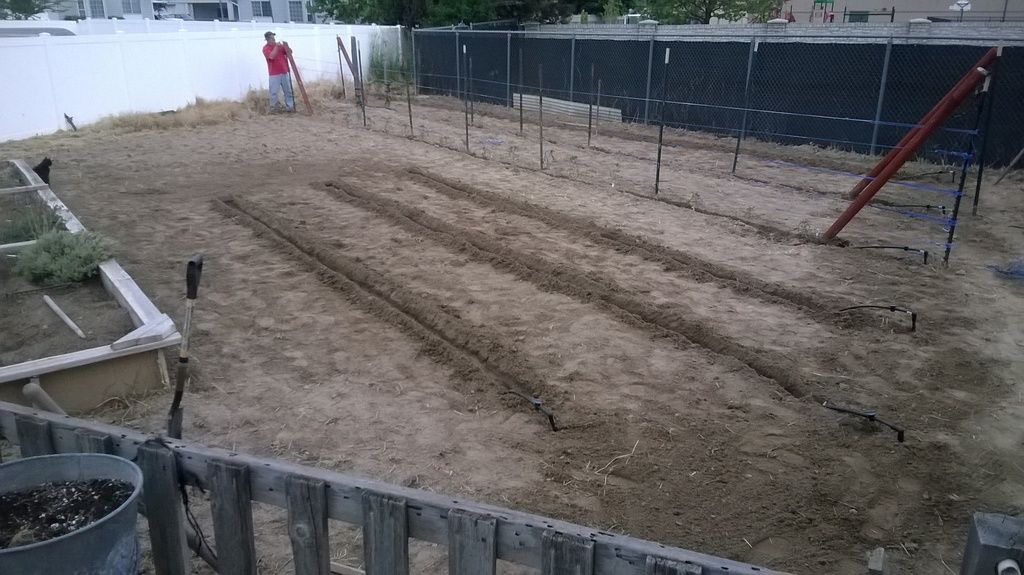- Location
- West Haven, UT
Little project from last night. I have needed to get my 6" 3-jaw chuck to 8" rotary table adapter completed for nearly 9 months now but haven't had time and it has just been on the "to do" list. Well I have a set of handlebar clamps to machine for a customer and I need the chuck/rotary table to do it. I figured I had better take a night and complete this so I can move onto a paying job.
I don't know if I have mentioned it or not, but I HATE machining cast iron, what a mess.
Here is the mess after the lathe work is completed and just prior to removing the backing plate from the 4-jaw chuck.

Turning and facing processes completed and ready to drill the mounting holes. The step is .001" smaller than the backside of the chuck so it will self center onto the plate.

Chuck test fit onto the plate to ensure self-centering. I got a little cocky here but I should have test fit it prior to removing it from the lathe. Had my measurements been off I could have been chucking it back up in the lathe to make a skim cut. Luckily everything fell together perfectly. Another reason I probably shouldn't work this late at night.

Vise removed from mill table and the backing plate clamped down locating the center. I have it spaced off the table so I can drill through without hitting the table. Using my handy, dandy modified Noga/IndiCol DTI holder. Works awesome. You can also see the DRO that I have zero'd after locating center.

Three chuck mounting holes drilled. The bolt hole circle function on my DRO ROCKS!!!

I used a .375" end mill and countersunk for the socket head capscrews to sit just below flush.

Next I flipped the adapter over and plugged the dimensions into the DRO for the four bolt hole pattern to match the slots in the rotary table.

Four bolt pattern drilled and countersunk with a .625" end mill.

Completed sitting on the rotary table.

Now that my 3-jaw chuck is mounted on my rotary table I can move on to the actual paying job that I needed this for. Oh well, at least it is off my bench and crossed off my list of things to do and is readily available when I have the next job come in requiring the chuck and rotary table.
Oh well, at least it is off my bench and crossed off my list of things to do and is readily available when I have the next job come in requiring the chuck and rotary table.
Mike.
I don't know if I have mentioned it or not, but I HATE machining cast iron, what a mess.
Here is the mess after the lathe work is completed and just prior to removing the backing plate from the 4-jaw chuck.

Turning and facing processes completed and ready to drill the mounting holes. The step is .001" smaller than the backside of the chuck so it will self center onto the plate.

Chuck test fit onto the plate to ensure self-centering. I got a little cocky here but I should have test fit it prior to removing it from the lathe. Had my measurements been off I could have been chucking it back up in the lathe to make a skim cut. Luckily everything fell together perfectly. Another reason I probably shouldn't work this late at night.

Vise removed from mill table and the backing plate clamped down locating the center. I have it spaced off the table so I can drill through without hitting the table. Using my handy, dandy modified Noga/IndiCol DTI holder. Works awesome. You can also see the DRO that I have zero'd after locating center.

Three chuck mounting holes drilled. The bolt hole circle function on my DRO ROCKS!!!

I used a .375" end mill and countersunk for the socket head capscrews to sit just below flush.

Next I flipped the adapter over and plugged the dimensions into the DRO for the four bolt hole pattern to match the slots in the rotary table.

Four bolt pattern drilled and countersunk with a .625" end mill.

Completed sitting on the rotary table.

Now that my 3-jaw chuck is mounted on my rotary table I can move on to the actual paying job that I needed this for.
Mike.



























